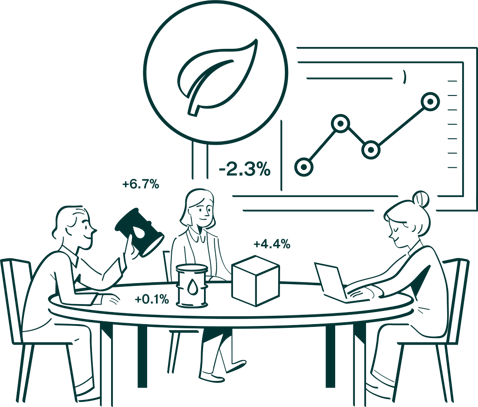
 1. In the overall context of global sustainability, how important is sustainability in shipping and why?
1. In the overall context of global sustainability, how important is sustainability in shipping and why?
Shipping accounts for about 3% of global greenhouse gas emissions and is likely to increase into the future. In addition, illegal bilge dumping, and shipping noise can impact marine and coastal wildlife.
While great advances are being made in some of the largest emission sources in other sectors (such as food production, energy and land transportation) there is still a huge potential for improvements in maritime shipping, making this sector a priority for sustainability.
2. What can shipping companies do to reduce carbon footprint in line with regulations?
There is a number of technical measures that have proven to reduce emissions cost-effectively, such as slow steaming, weather routing, contra-rotating propellers and propulsion, amongst other, but some of the largest and cheapest gains could come from operational data-based strategies, such as weather routing, or route optimization that can, in fact, generate more fuel savings than their implementation cost.
Furthermore, companies can work together and with policymakers to establish broad and fair emission monitoring, reporting and verification policies, and set gas reduction targets for the sector (as other sectors such as food commodities are doing).
3. What are the benefits of being sustainable for shipping owners & operators?
Sustainable or low carbon shipping can be quantified and certified, creating a market for more sustainable shipping. Investing in low carbon shipping technologies can save fuel costs over the long term. Better planning and predictive capability have the potential to both increase profitability while reducing emissions per ton (e.g. by optimizing routes and reducing idle time). There is a regulatory risk that emissions from shipping will be taxed or otherwise regulated for imported goods. Last but not least, sustainable companies are better able to attract and retain talent.
4. What are risks or pitfalls to avoid in developing more sustainable solutions?
IMO (and although this has changed a lot in the last few years) a common pitfall is to implement a sustainability strategy as a discrete activity, or a budget line of its own (or worse, a department reporting to the communications and marketing area).
Designing sustainable solutions rooted in the reputational risks, or the regulatory framework and seeing them as a “necessary cost” risks makes it difficult or impossible to successfully implementing them in the ground.
Reputation and compliance are of course very important factors, but sustainable solutions should work aligned and intertwined with the company’s operations and its corporate strategy. They should be designed and developed from the inside out, not as a layer on top. To be successful, they should be regarded as an opportunity and an investment, and co-designed with all the stakeholders and departments, from sales to R&D to IT and of course, operations.
Another important factor is avoiding friction in the implementation. Setting policies, targets and guidelines is a first step, but it’s not enough. We also need to implement the tools for these to be effective. Such tools will necessarily have a big data component and need to be easy to use and integrated with all the other tools the team uses. If implementing a sustainability policy means a cognitive burden or increased bureaucracy, then chances are it won’t be successful.
Furthermore, they should be culturally embedded in the purpose and vision of the company.
5. Name two or three obstacles for achieving sustainability in shipping (e.g. Standards? Culture? Uncertainty in regulations?) and describe why they matter?
The geographic distribution of the operations makes it harder to create international strategies and policies. This, in turn, creates regulatory uncertainty and can discourage sustainable solutions at the company level.
6. How can technology be leveraged to support sustainability?
The current state of the art in data collection and processing from various sources, ranging from remote sensing to IoT makes it easier than ever to create robust monitoring and reporting systems and powerful decision-making tools that leverage technologies such as deep learning and data visualization. The cost of these tools is far lower than the economic and environmental gains they can achieve.
7. What's the one thing that you'd want our readers to take away from this roundtable?
Becoming more sustainable in the sector is not just about avoiding risks, it’s also about seizing a business opportunity

These Stories on Decarbonisation